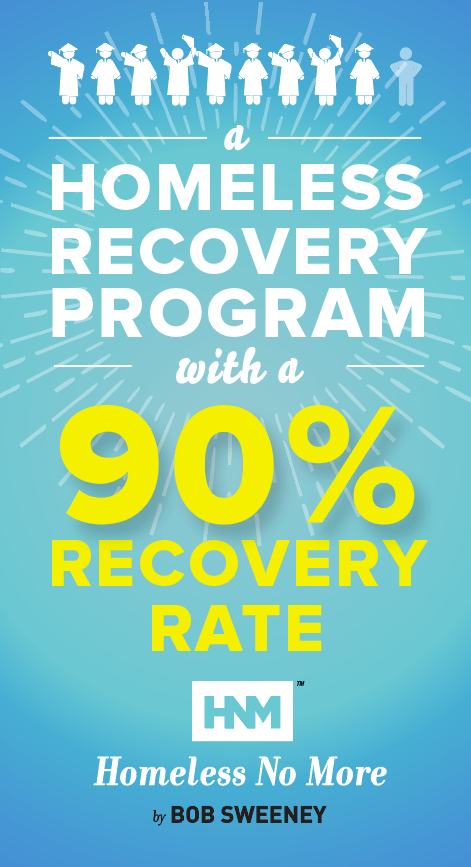Dallas, a city known for its vibrant culture and bustling economy, faces a pressing challenge that contrasts sharply with its prosperity: homelessness. Recent years have seen varying trends in homelessness across Dallas and Collin Counties, with organizations like Housing Forward leading the charge to address this crisis head-on. As the writer and founder of the Homeless No More program, I’ve seen firsthand the difference we can make with concerted efforts and community support.
The Current State of Homelessness in Dallas
In the most recent State of Homelessness Address, Housing Forward revealed some heartening progress alongside ongoing challenges. The year 2023 marked a significant turning point, with the lowest count of individuals experiencing homelessness in five years across Dallas and Collin Counties—4,244 to be precise. This reduction, notably a 14% decline in unsheltered homelessness and a sharp 32% decrease in chronic homelessness, underscores the impact of targeted initiatives and community investments 1.
Get Free Our Report: “7 Steps That Get 90% Off The Street”
Homeless No More: A Beacon of Hope
At Homeless No More, we’ve mirrored this commitment, boasting a 90% success rate in helping individuals off the streets. Our approach emphasizes not just emergency assistance but sustainable, meaningful transitions to a better life. However, challenges persist, notably around affordable housing. The City of Dallas has faced criticism for its slow permitting process, which many argue hampers efforts to build affordable housing critical for preventing homelessness 2.
As we delve into the specifics of homelessness in Dallas, let’s remember: every individual has the power to make a difference. Join Homeless No More in our mission. See how your contribution can help someone on the road to a better life.

The Path Forward
Despite these strides, the journey is far from over. The roadblocks to eliminating homelessness are many, including bureaucratic hurdles that slow the development of necessary affordable housing. Experts and advocates alike point to Dallas’ complex land use and permitting processes as significant barriers to building new, naturally affordable housing 3.
The expansion of initiatives like Dallas R.E.A.L. Time Rapid Rehousing by Housing Forward and the All Neighbors Coalition illustrates the promising strides being made. This expanded effort aims to serve 6,000 individuals and families by 2025, leveraging significant investments and resources to tackle homelessness head-on 4.
_____
Homelessness in Dallas Today: Navigating Through the Challenges
In the heart of Dallas, the issue of homelessness remains a significant challenge that mirrors the broader national crisis, yet carries its unique complexities. As we navigate through the bustling streets of this vibrant city, the shadows cast by skyscrapers are home to many who find themselves without a roof over their heads. The current state of homelessness in Dallas is a reflection of both the city’s resilience and its ongoing struggles.
Recent reports by Housing Forward and the annual State of Homelessness Address highlight a mix of progress and ongoing challenges. In an encouraging sign, the latest Point-in-Time count reveals the lowest number of individuals experiencing homelessness in five years across Dallas and Collin Counties, with 4,244 people counted. This represents a notable 14% decline in unsheltered homelessness and a significant 32% decrease in chronic homelessness from the previous year 5. These figures, while promising, underscore the importance of sustained efforts and innovative strategies to address the root causes of homelessness.
Despite this progress, challenges persist, exacerbated by the city’s slow permitting process for new affordable housing developments. This bureaucratic bottleneck not only hampers the construction of much-needed affordable housing but also fuels the homelessness crisis further 6. The situation calls for a concerted effort to streamline processes and remove barriers to housing development, ensuring that everyone in Dallas has access to safe, affordable housing.
Get Free Our Report: “7 Steps That Get 90% Off The Street”
As we look to the future, the road ahead is paved with both challenges and opportunities. The success stories and the data point towards a hopeful direction, but the need for community involvement, policy reform, and continued innovation has never been more critical. Let’s unite in our efforts to tackle homelessness in Dallas, guided by compassion, driven by action, and inspired by the possibility of a better tomorrow for all.
Grasping the Scale: Homelessness in Dallas by the Numbers
In Dallas, the story of homelessness is one told through numbers—numbers that reflect lives, struggles, and, importantly, the potential for change. As we delve into the statistics, we see not just figures but stories of resilience, community effort, and the ongoing challenge we face together in Dallas.
As mentioned, in 2023, Dallas and Collin Counties saw a pivotal moment in the fight against homelessness. The Point-in-Time count, a critical measure of our homeless population on any given night, reported 4,244 individuals experiencing homelessness. This number, while still significant, marks the lowest count in five years. It’s a testament to the hard work of organizations, advocates, and the community in tackling this issue head-on 7.
The reduction in numbers is even more notable when we examine specific categories of homelessness. Between 2022 and 2023, unsheltered homelessness—those without any form of shelter whatsoever—saw a 14% decrease. Chronic homelessness, defined as individuals with a disability experiencing prolonged periods of homelessness, dropped by an impressive 32%. These figures not only highlight the success of recent initiatives but also underline the areas where continued focus and resources are needed.
Understanding the Trends
Comparing these statistics to previous years, we observe a trend of fluctuating numbers, with spikes in homelessness attributed to various factors, including economic downturns, housing crises, and most recently, the COVID-19 pandemic. The pandemic, in particular, brought unprecedented challenges, exacerbating the homelessness crisis not just in Dallas but nationwide. Yet, the resilience of our community and the adaptability of our response systems have begun to turn the tide.
In 2022, discussions around homelessness in Dallas also highlighted the obstacles to creating more affordable housing—a key component in preventing and ending homelessness. Challenges such as slow permitting processes for new constructions have been identified as significant barriers, emphasizing the need for policy and procedural reforms to address the root causes of homelessness effectively 8.
Be A Part of The Solution
As we reflect on these statistics, the role of each community member in supporting our homeless neighbors becomes ever more apparent. Homeless No More‘s approach has consistently shown success, with a focus on not just temporary relief but sustainable support and housing solutions. Your support can directly contribute to the continuation and expansion of these vital services.
The numbers tell a story of progress, challenges, and hope. As we look to the future, it’s clear that with sustained effort, collaboration, and support from the community, we can continue to make strides in addressing homelessness in Dallas. The journey is far from over, but together, we can create a future where everyone who desires to recover from homelessness has the opportunity to do so.

Homelessness in Dallas 2021
Reflecting back to 2021 gives us a poignant perspective on the journey Dallas has undertaken in addressing homelessness. That year marked not just a period of challenge but also a defining moment in rallying collective efforts towards innovative solutions.
The 2021 Snapshot
In 2021, Dallas, much like the rest of the world, was grappling with the aftermath of the COVID-19 pandemic—a crisis that exacerbated existing vulnerabilities across numerous communities, particularly for those experiencing homelessness. The economic fallout from the pandemic introduced a new layer of complexity to the homelessness crisis, highlighting the urgent need for adaptive strategies and robust support systems.
The Point-in-Time count of that year offered a stark reflection of these challenges, capturing the scale of homelessness and serving as a critical tool for shaping the response efforts. While specific numbers from that count paint a picture of the situation’s gravity, it’s the stories behind these numbers—the individuals and families navigating homelessness amidst a global pandemic—that underscore the imperative for compassionate, comprehensive action.
Progress and Adaptation Since 2021
Since 2021, Dallas has witnessed notable progress in the fight against homelessness. Initiatives aimed at expanding access to affordable housing, enhancing support services, and fostering community partnerships have all contributed to a gradual but meaningful reduction in homelessness rates. The efforts of organizations like Homeless No More, coupled with community support and policy advancements, have been instrumental in these achievements.
Notably, the decline in chronic and unsheltered homelessness reported in subsequent years signifies the impact of targeted efforts and the potential for continued progress. These efforts have been bolstered by the integration of technology and data analytics into homelessness response strategies, enabling more personalized, effective interventions.
Looking Ahead
As we look back at 2021, it’s clear that the challenges were significant, but so too were the moments of resilience, innovation, and community solidarity. The lessons learned and successes achieved since then offer a blueprint for the ongoing mission to make homelessness rare, brief, and non-recurring in Dallas.
Where Are the Most Homeless in Dallas?
In Dallas, the geography of homelessness reflects both the city’s sprawling urban landscape and the complex socio-economic factors contributing to the crisis 9.
The challenge in pinpointing the “most” homeless areas in Dallas stems from the dynamic nature of homelessness itself. Factors such as affordable housing shortages, zoning laws, and the efficiency of city permitting processes for new constructions significantly influence where homeless populations are most visible or concentrated 10. These systemic issues highlight the need for comprehensive solutions, including changes in zoning laws to allow for more diverse housing options and the development of single-room occupancy units, which have been scarce in recent years 11.
One notable approach to addressing homelessness has been the concept of centralized services, similar to San Antonio’s Haven for Hope, which suggests that a one-stop-shop model for homeless services could be beneficial 12. This model aims to provide a range of services in one location, making it easier for individuals experiencing homelessness to access the support they need.
As Dallas continues to grapple with these challenges, the emphasis on getting to root causes of homelessness, creating more affordable housing and streamlining processes to facilitate this development remains critical. The city’s response to homelessness, characterized by both progress and ongoing obstacles, reflects a broader national struggle to address housing insecurity and its root causes.
Hotel Vouchers for Homeless in Dallas
In Dallas, a vital resource for those experiencing homelessness is the hotel voucher system, which provides temporary shelter for individuals and families in immediate need. This system, part of broader emergency housing assistance efforts, plays a crucial role in the city’s strategy to manage and alleviate homelessness.
How the Voucher System Works
The Emergency Housing Assistance Program (EHAP), operational through Dallas County Health and Human Services, offers short-term assistance to those facing eviction or with mortgage arrears. This program, which opens applications annually, aims to prevent homelessness by providing crucial financial support to keep individuals and families in their homes or in temporary hotel accommodations until more permanent solutions can be found. The assistance is determined through a pre-screening process and is designed to help catch up on rent or mortgage for those who qualify 13.
Elevate North Texas, another organization, extends this support specifically to youth between 18 to 24 years old, offering emergency shelter through hotel partnerships. This initiative not only provides immediate shelter but also addresses other necessities such as safety, food, and access to resources aimed at securing long-term housing and employment. The goal is to offer a stabilizing environment that enables young people to transition out of homelessness 14.
The Impact
As mentioned, programs like the Dallas R.E.A.L. Time Rapid Rehousing initiative demonstrates the potential impact of combining emergency housing vouchers with comprehensive support services. By housing over 2,700 individuals by the end of 2023 and aiming to reach 6,000 by 2025, the initiative highlights the importance of personalized support in addressing homelessness. Participants in these programs receive not just housing, but also essential items to start anew and access to services ranging from mental health care to job training. The approach is tailored, considering the unique needs of individuals to enhance their ability to maintain stable living conditions long-term 15.
These efforts showcase a multifaceted approach to tackling homelessness, acknowledging the necessity of immediate shelter while also addressing the underlying factors that contribute to housing instability. By providing a bridge to stability, Dallas’ hotel voucher and associated programs embody a critical intervention in the broader battle against homelessness in the city.
Dallas Homeless Solutions
In Dallas, the concerted efforts of city officials, non-profit organizations, and the community have led to the development of innovative solutions aimed at addressing the complex issue of homelessness. The Office of Homeless Solutions (OHS), established to act as change agents within the community, has implemented a series of strategic initiatives and outreach programs designed with the goal of overcoming homelessness throughout Dallas 16. These efforts are part of a broader, collaborative endeavor to make a tangible difference in the lives of our homeless neighbors.
The R.E.A.L. Time Rehousing Initiative, has marked a significant milestone by housing 2,700 unsheltered neighbors since its inception in October 2021. The initiative represents a major step forward in the city’s effort to reduce homelessness. This progress is attributed to the effective collaboration between public and private partners, streamlining resources to address the issue more efficiently 17.
The City of Dallas, through the Office of Homeless Solutions, has adopted a Four-Track strategy designed to address homelessness comprehensively. This approach includes increasing shelter capacity, providing inclement weather shelters, offering subsidized supportive housing, and making investments in facilities combating homelessness. Each track aims to meet the immediate needs of the homeless population while developing sustainable solutions for the future 18.
Housing Forward, previously known as the Metro Dallas Homeless Alliance, plays a critical role in this collaborative effort. As a leader in the fight against homelessness, Housing Forward works closely with the All Neighbors Coalition, comprising over 140 partners across Dallas and Collin Counties. Together, they provide direct support to individuals, youth, and families experiencing homelessness, employing a data-driven strategy to address the issue comprehensively 19.
These initiatives and the collaboration between various stakeholders underscore Dallas’ commitment to solving homelessness through targeted interventions, support services, and the development of affordable housing solutions. By focusing on both immediate relief and long-term sustainability, Dallas is making strides toward creating a community where every individual has access to a safe and stable home. Because not everyone will accept the assistance offered to them, having multiple approaches to solve homelessness is an important part of lasting recovery.
Dallas Homeless Encampments
Homeless encampments in Dallas serve as stark reminders of the city’s ongoing struggle with homelessness. These encampments, often formed in public spaces, represent a complex challenge for both the individuals who find refuge in them and for city officials tasked with providing aid and solutions. The city’s approach to addressing the needs of those living in encampments has evolved, aiming to balance enforcement of public space laws with compassionate outreach and support services.
The Dallas City Council is considering the development of city-sanctioned homeless encampment sites, following recommendations from the HOPE task force. This move, aimed at creating designated areas where homeless individuals can reside without the usual barriers posed by shelters, such as sobriety requirements, represents a significant shift in the city’s strategy towards managing homelessness. The sanctioned encampments – as they are designed – would potentially offer a variety of housing options, including tents, campers, and fixed tiny homes with basic amenities like food, sanitation, and security. This initiative is seen as a way to provide viable alternatives for those who refuse traditional shelter services, addressing public safety and health concerns while also offering a pathway to more stable living conditions 20. Even when encampments are city-sanctioned, I don’t see them as a viable long-term solution to chronic homelessness. The Homeless No More program – with mentors, education, and wrap-around services including mental health care – is the only program with a 90% success rate for permanent recovery from homelessness.
Also, the journey from encampment to stable housing is fraught with challenges. Programs like the Dallas R.E.A.L. Time Rapid Rehousing Initiative have made strides in transitioning individuals from homelessness to permanent housing, with over 1,400 people housed since its inception. Despite this success, many individuals waiting for assistance encounter long delays and a lack of clear communication from program administrators. The scarcity of participating apartment complexes and the need for more landlords to join the initiative underscore the complexities of addressing homelessness through housing-first strategies 21.
The experiences of those living in Dallas’ homeless encampments highlight the multifaceted nature of homelessness, requiring tailored approaches that consider individual circumstances and needs. As the city continues to explore solutions like sanctioned encampments and expand its rapid rehousing efforts, the ultimate goal remains clear: to provide everyone with the opportunity for a safe and stable place to call home.
Dallas Homeless Shelters
Dallas homeless shelters play a pivotal role in providing both immediate and long-term assistance to individuals and families facing homelessness. Institutions like The Bridge, Austin Street Center, and Family Gateway exemplify the comprehensive support network available within the city, each with their unique approach to tackling the multifaceted issue of homelessness.
The largest homeless shelter in North Texas, Dallas LIFE, utilizes the Homeless No More comprehensive recovery program in combination with basic provisions such as shelter, clothing, and meals. I created the Homeless No More after experiencing firsthand the gaps in other recovery programs. By addressing the immediate needs and the shortcomings of other recovery programs, the specific issues that cause homelessness must be identified and rectified simultaneously for lasting recovery to be possible. Our specific population includes seniors, families, single mothers and fathers, veterans and the disabled. From job training to mental health counseling and mentoring to spiritual care, our impetus is to rebuild lives by not just sheltering but by reintegrating men and women into society – without a relapse into homelessness.
The Bridge, located in the Farmers Market District of downtown Dallas, operates on a “one-stop” concept, offering a wide array of services including emergency shelter, transitional housing, meals, healthcare, employment and income services, laundry, and personal hygiene facilities. This approach not only addresses the immediate needs of the homeless population but also engages them in recovery programs aimed at securing long-term housing and self-sustainability 20, 21.
Austin Street Center focuses on transforming lives through innovative programs and individualized plans aimed at helping clients find permanent housing solutions. For over three decades, it has served as one of Dallas’ largest homeless shelters, providing emergency housing and a hopeful path forward for thousands of men and women in Dallas. The center emphasizes the importance of a collaborative and comprehensive care model, supported by generous volunteers and donors 22.
Family Gateway offers specialized support for families, operating two shelter locations in partnership with the City of Dallas and The Salvation Army. The organization focuses on meeting immediate needs for safety, housing, and food, while also providing programs aimed at stabilizing housing and employment for parents and education for children. Unique in its service to all types of families and maintaining family unity, Family Gateway also practices diversion to find alternatives to shelter for families with children experiencing homelessness 23.
Each of these shelters contributes to a larger ecosystem of support, addressing the immediate need for safe accommodation while laying the groundwork for a more secure future. Their efforts are complemented by a wide range of services designed to navigate the complexities of recovery from homelessness, including access to healthcare, employment services, and educational activities. Together, these institutions embody Dallas’ multi-faceted approach to providing shelter and assistance to its homeless population, aiming for a future where every individual has a place to call home.
Homelessness in Dallas — Addressing the Key Questions:
Addressing homelessness in Dallas and comparing it with broader national trends illuminates both the local and nationwide challenges of homelessness.
Is there a homeless problem in Dallas?
Yes, Dallas, like many cities across the United States, faces a significant issue with homelessness. Recent data show that Dallas and Collin Counties have seen fluctuations in their homeless populations, with a noted decrease in recent years. In the 2023 Point-in-Time count, 4,244 individuals were reported as experiencing homelessness, marking the lowest count in five years for the area. This represents a concerted effort by local organizations and government interventions to tackle the issue head-on 24.
Which US city has the most homeless?
New York City and Los Angeles have the highest numbers of homeless individuals in the United States. New York City, with 88,025 homeless individuals, and Los Angeles, with 71,320, account for nearly a quarter of the nation’s homeless population. These cities are particularly affected due to their large populations and high housing costs 25.
How many homeless people are in Dallas 2023?
As mentioned previously in this article, in 2023, Dallas and Collin Counties reported 4,244 homeless individuals on the night of the Point-in-Time count. This number indicates a significant challenge but also shows progress in reducing homelessness, thanks to local initiatives and resources aimed at assisting those in need 26.
What are the top 5 homeless states?
The states with the largest populations of homeless individuals are California, New York, Florida, Washington, and Texas. Together, these states account for 55% of the entire homeless population in the country. This high concentration is partly due to the overall population size of these states and the high costs of living, especially in urban areas 27.
In summary, while Dallas shows encouraging signs of progress in reducing homelessness, the city’s efforts are part of a larger national context where homelessness remains a significant challenge, especially in states and cities with high living costs. Addressing homelessness effectively requires a varied and strategic approach, including affordable housing, healthcare, and employment services, tailored to meet the diverse needs of the homeless population, that most importantly, includes identifying and resolving the five triggers of homelessness.
Wrapping It All Up
In our exploration of homelessness in Dallas, we’ve unearthed both the local and national dimensions of this pervasive issue. By delving into the current state of homelessness in Dallas, examining statistics, and comparing Dallas within the broader American context, we gain a clearer understanding of the magnitude and complexity of homelessness. It’s evident that while Dallas has made strides in addressing homelessness—evidenced by the recent decrease in its homeless population—there remains a significant journey ahead.
The significance of addressing homelessness extends beyond the moral imperative to support our most vulnerable neighbors. It’s about building healthier, more resilient communities where every individual has the opportunity for a stable and dignified life. Programs like Homeless No More stand at the forefront of this mission, demonstrating a 90% success rate in aiding individuals off the streets and into meaningful, self-sustained living.
As we conclude our discussion, it’s clear that the battle against homelessness is not just fought on the front lines by shelters and programs but also in the hearts and actions of each community member. The success stories from Homeless No More and similar initiatives across Dallas and the nation highlight the impact of collective action and compassionate intervention.
References
- https://housingforwardntx.org/blog/state-of-homelessness-address-2023/
- https://dallasexpress.com/city/dallas-214-spike-in-chronic-homelessness/
- Ibid.
- https://housingforwardntx.org/blog/state-of-homelessness-address-2023/
- https://housingforwardntx.org/blog/state-of-homelessness-address-2023/
- https://dallasexpress.com/city/dallas-214-spike-in-chronic-homelessness/
- https://housingforwardntx.org/blog/state-of-homelessness-address-2023/
- https://dallasexpress.com/city/dallas-214-spike-in-chronic-homelessness/
- https://housingforwardntx.org/wp-content/uploads/2023/05/ICA-PIT-2023-Report_HF_FinalReport5.17.2023.pdf#:~:text=URL%3A%20https%3A%2F%2Fhousingforwardntx.org%2Fwp
- https://dallasexpress.com/city/dallas-214-spike-in-chronic-homelessness/
- Ibid.
- Ibid.
- https://www.dallascounty.org/departments/dchhs/
- https://elevatentx.org/programs/hotel-program/
- https://dallashomelesssolutions.com/our-initiatives/dallas-r-e-a-l-time-rapid-rehousing/
- https://dallascityhall.com/departments/homeless-solutions/Pages/default.aspx
- https://www.dallascitynews.net/city-of-dallas-office-of-homeless-solutions-the-all-neighbors-coalition-and-housing-forward-reaches-2700-housed-in-the-r-e-a-l-time-rehousing-initiative
- https://dallashomelesssolutions.com/our-initiatives/
- https://housingforwardntx.org/
- https://dallasexpress.com/city/city-to-pursue-sanctioned-homeless-camps/
0025





